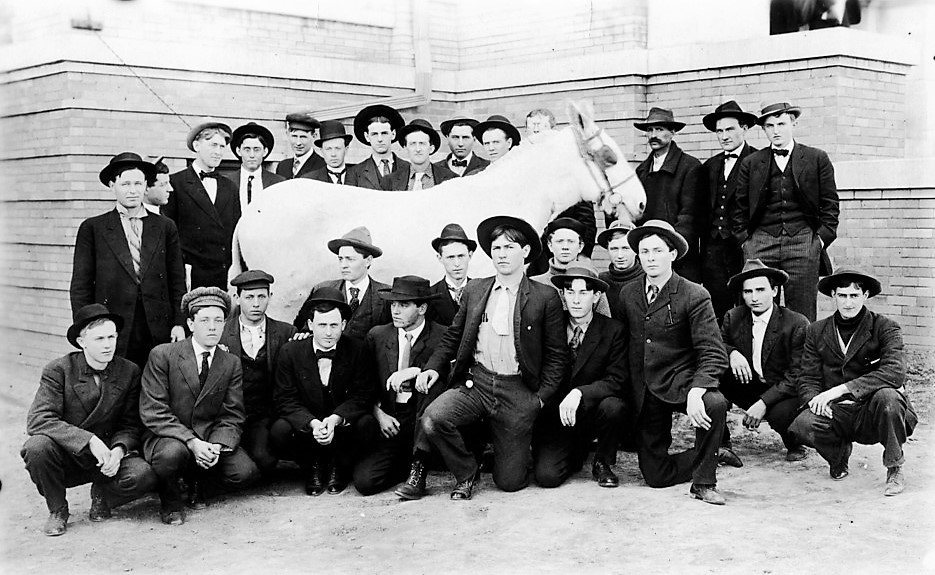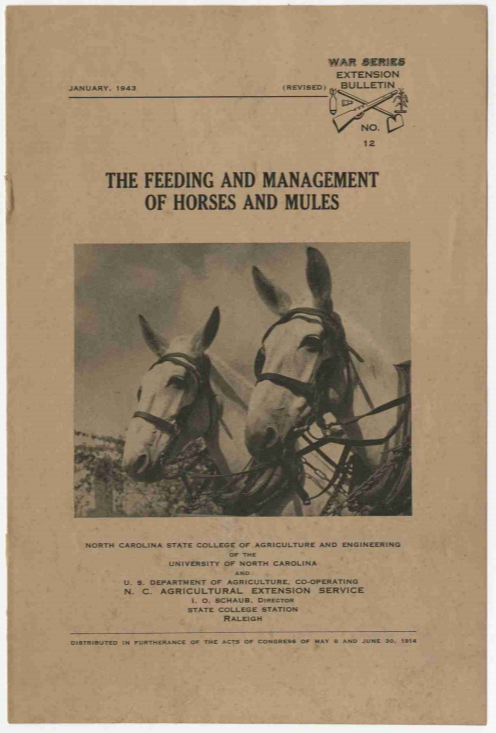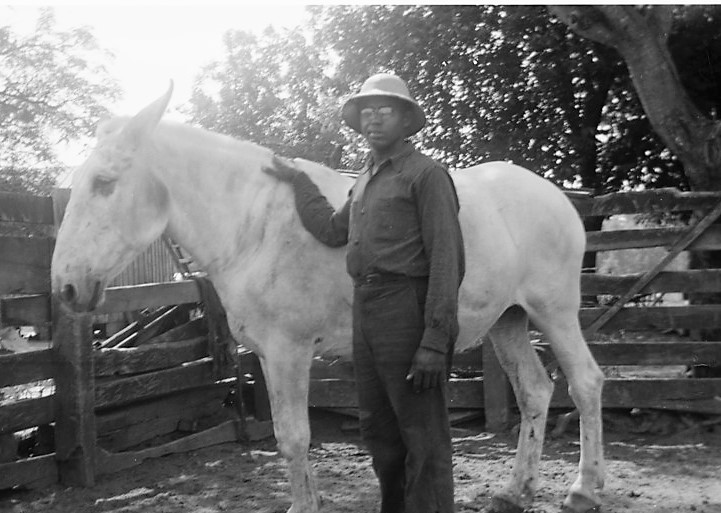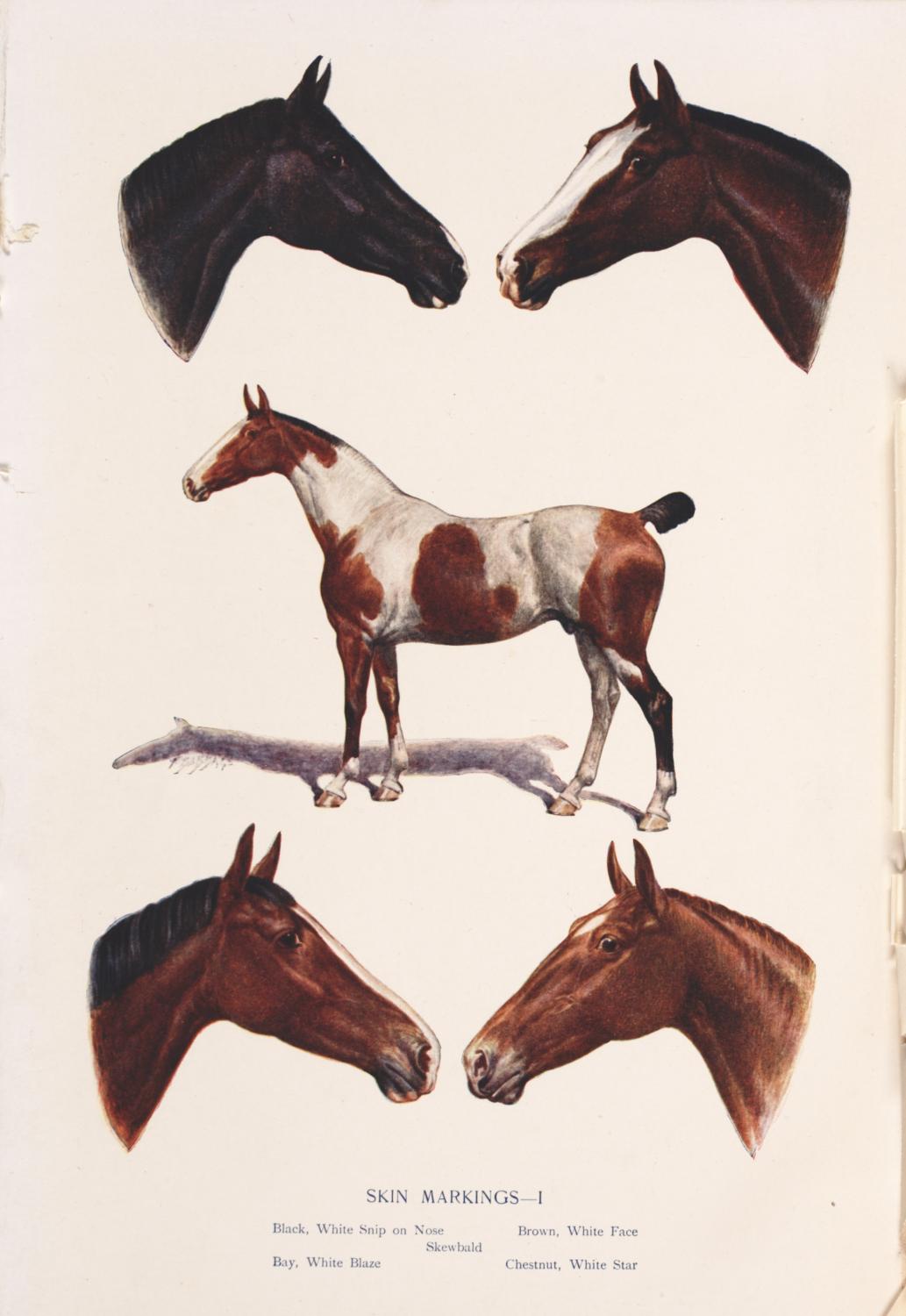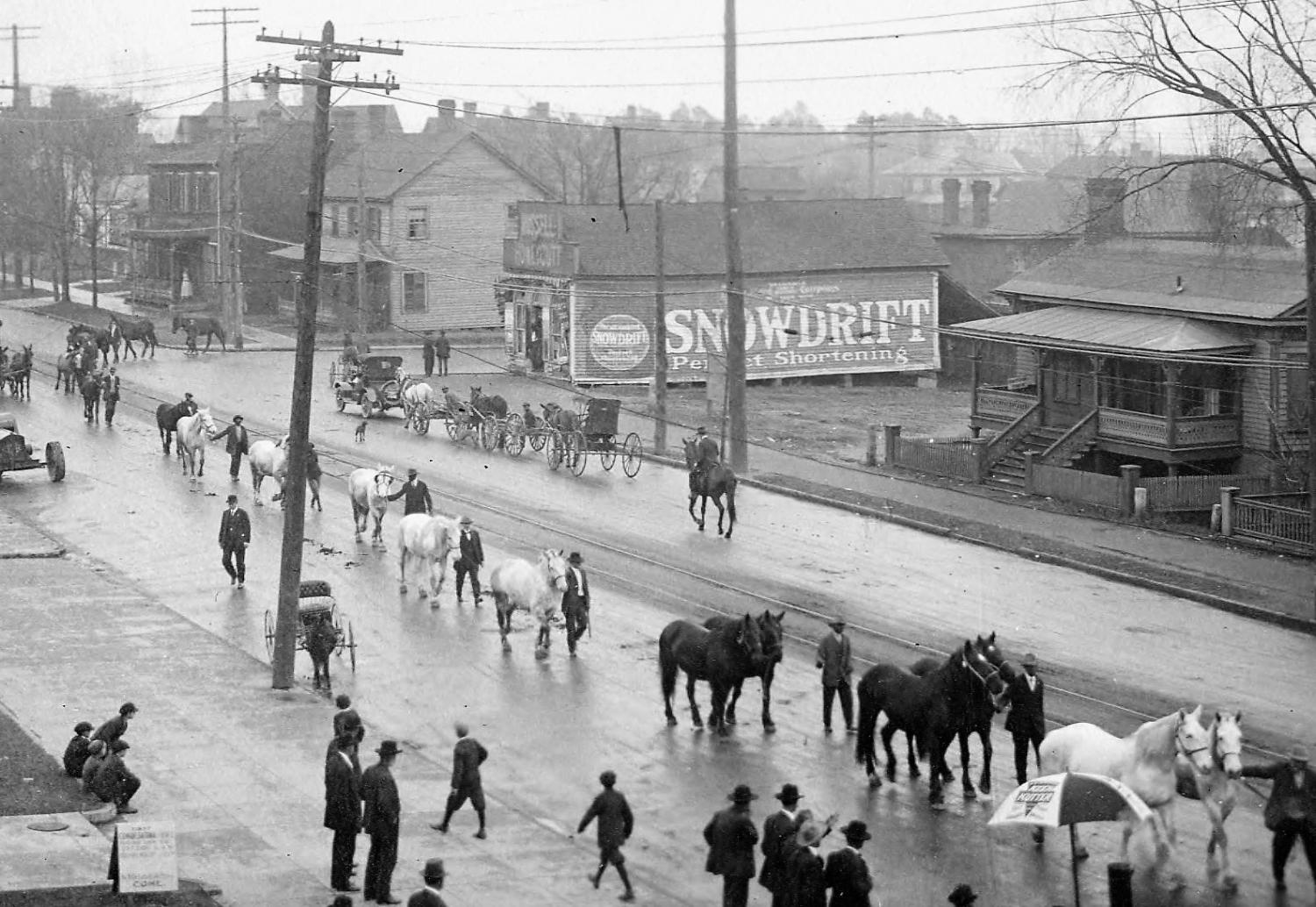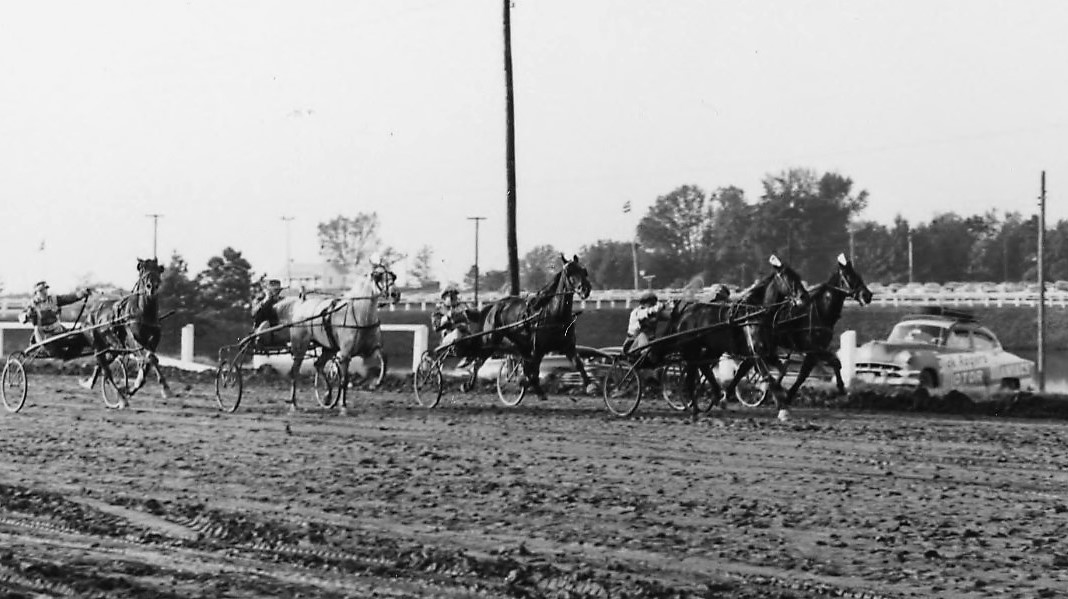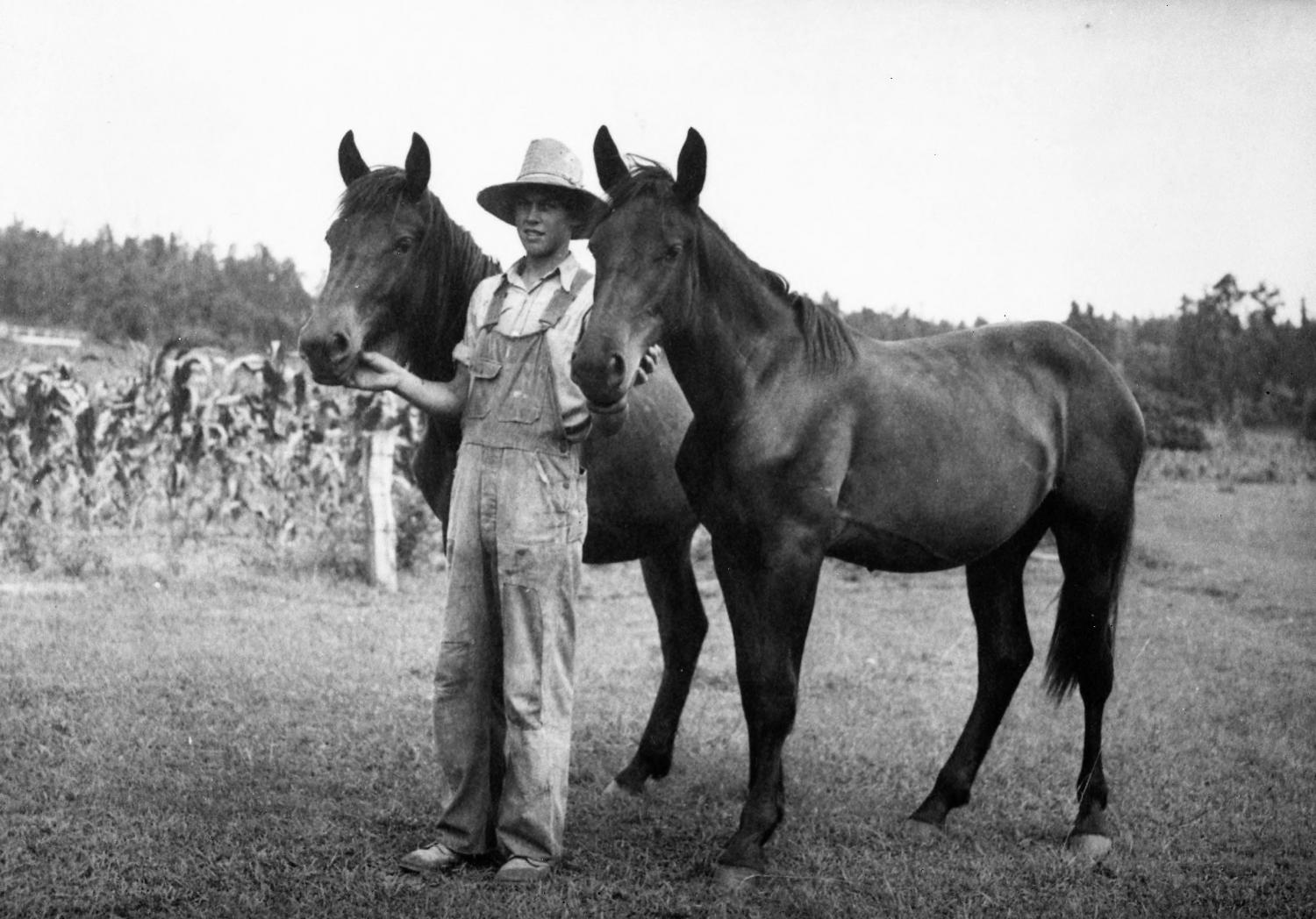Working Equids: Horses and Mules in North Carolina
[blog post co-authored by Kris Alpi, Director, William Rand Kenan, Jr. Library of Veterinary Medicine]
In honor of the 2018 FEI World Equestrian Games, taking place this September in Tryon, NC, a display of materials from NCSU Libraries Special Collections Research Center is open to the public at the William Rand Kenan, Jr. Library of Veterinary Medicine. This display, the final in a series of three (the first and second in the series were also featured on the blog), showcases a selection of historical materials related to working equids (horses and mules) traveling to and around North Carolina. In a collaboration between SCRC and Veterinary Medicine Library staff, we’ve provided a digital tour of the materials that will be on display in the Kenan Library of Veterinary Medicine through spring 2019.
Agricultural education has been a part of the curriculum taught at NC State from the very beginning, as seen in the first undergraduate course catalog, published in 1890. Students such as those pictured here learned about the feeding and care of farm animals, including horses and mules, as part of the first courses taught at NC State.
And what a well-behaved equid to stand in close quarters surrounded by all of these students! Squatting with your back close to a mule or horse’s hind legs is never recommended, no matter how expert you have become.
This publication from the North Carolina Cooperative Extension Service provided information to North Carolina farmers about the feeding and management of horses and mules, distributed as part of a special series of bulletins during World War II. The pair of mules in harness on the cover have bright eyes and, judging by the ears, a decent attitude towards work. Nutrition for working animals is critical, and even in a warm state like North Carolina needs special attention year around.
The North Carolina Association of New Farmers of America (NFA) was founded at North Carolina A&T State University in 1926, as a vocational agricultural program for African American youth. The young farmer pictured here presents his draft mule. Mules are the offspring of a male donkey (jack) and a female horse (mare).
This image and others from North Carolina A&T have been digitized as part of the Better Living in North Carolina digitization project, a collaboration between the NCSU Libraries and the F. D. Bluford Library at North Carolina A&T State University.
Health certificates for horses traveling between states and countries relied on accurate descriptions, drawings and later photographs. Competition horses coming to NC today are often microchipped to reduce chances of misidentification. Although this book is from London, not North Carolina, it highlights the incredible potential variations in color and marking of horses. Learn more from our wonderful books on horse color genetics.
Rain did not dampen the energy of the two-horse teams leading this parade. Nor did the umbrella spook them--the horses chosen for this event were perhaps a little more sensible than some of today’s high-strung equine companions.
Harness horses may trot or pace depending on the race. Look at the legs here: are the same side legs moving in tandem (pacing) or opposite sides (trotting)? It’s hard to tell for the first two horses--there’s a lot going on. There is still a Harness Track for training Standardbred horses in Pinehurst, NC that has been operating since 1915. For more about harnesses and carts, see our previous blog post, “Horses In Harness: The Road to the World Equestrian Games.”
This guide highlights the North Carolina transition from working horses to pleasure mounts, describing the most common horses and ponies for 4-H Projects. Most of these breeds remain popular in North Carolina, with the exception of the little known Morocco Spotted Horse defined in the American West as descending from Barb and Hackney horses and characterized by pinto coloration.
Other materials from 4-H and Agricultural Extension are available online through the Better Living in North Carolina and Green N’ Growing digitization projects.
The human-horse connection is evident by Henry’s ability to keep his equine companions focused by a light touch. While the breed and age of his project horses are unknown, they seem to be in good condition. Modern show horses often carry too much weight and are described as “over-conditioned”--sport horse nutrition is an area of research and faculty expertise here at NC State.
These materials and more are available to interested researchers through the NCSU Libraries Special Collections Research Center. The SCRC supports the research and teaching strengths of the NC State community, with rare, unique, original materials in collecting areas including Veterinary Medicine and Zoological Health. Explore the collections on the SCRC website, and contact us to plan a visit to view materials in the SCRC reading room in D. H. Hill Jr. Library.
The D. H. Hill Jr. Library general collection and the William Rand Kenan, Jr. Library of Veterinary Medicine also hold hundreds of books and videos on all aspects of equestrian sports, horse care and equine medicine. Search the catalog for your topic of interest and visit the Libraries!
Learn more about the first and second displays celebrating the 2018 FEI World Equestrian Games here:
- “Celebrating the History of Horses and Humans Competing Together” (2/21/2018)
- “Horses in Harness: The Road to the World Equestrian Games” (6/8/2018)
